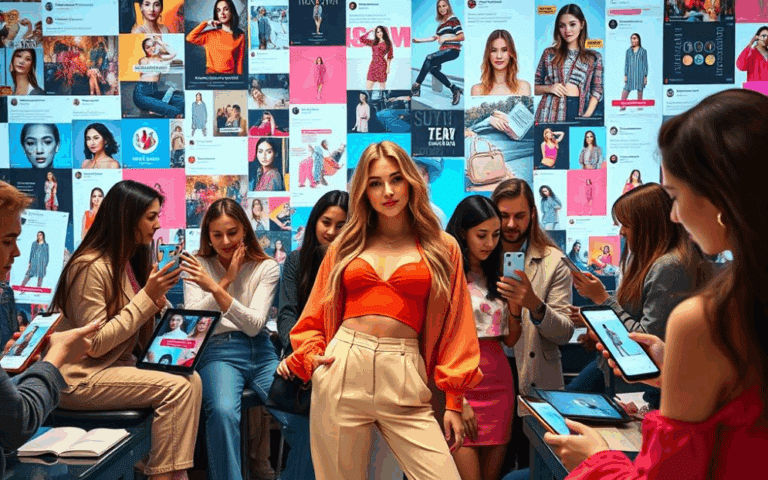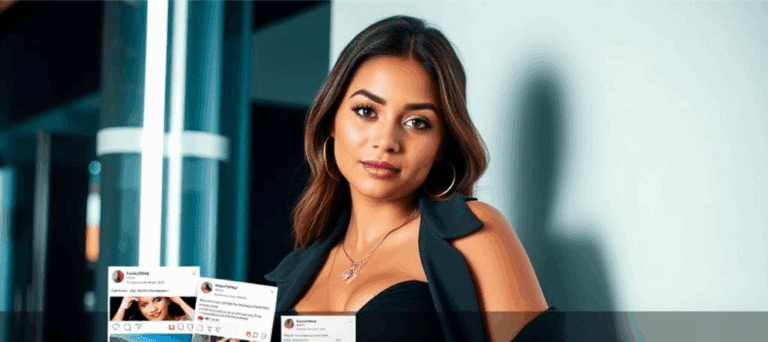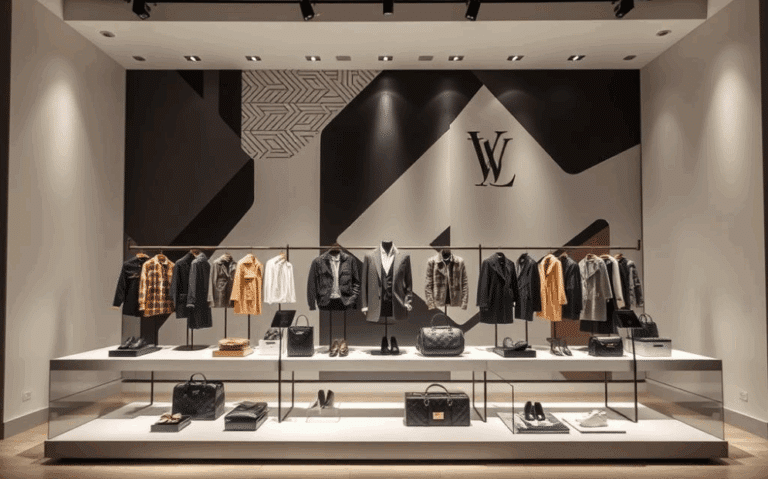Anúncios
Over 200 content creators land free wardrobe deals with major retailers annually – but less than 5% understand exactly how these partnerships work. One UK-based brand dominates this space, dressing influencers from Los Angeles to Auckland in its trendy designs.
This fashion powerhouse targets Gen Z shoppers through bold marketing strategies. Their team scouts creators who embody youthful confidence and curate Instagram feeds that spark “I need that outfit” reactions. While celebrity deals grab headlines, everyday influencers can secure product bundles or creative roles.
The process involves more than just follower counts. Brands seek collaborators who align with their aesthetic and engage audiences authentically. Successful applicants often showcase strong visual storytelling skills across TikTok, YouTube Shorts, and Pinterest.
Our guide reveals insider strategies used by creators who’ve partnered with this retailer. You’ll learn how to position your content, craft winning pitches, and navigate the competitive selection process – whether you’re in Christchurch or Queenstown.
Start Your PrettyLittleThing Collaboration Journey
Landing fashion partnerships requires strategic preparation. Before approaching any company, creators must prove they can deliver value through authentic storytelling and visual appeal.
Evaluating Your Social Media Profile and Influencer Readiness
Begin by comparing your content to current partners of your target brand. Study their photo styles, caption tones, and how they integrate products naturally. Tools like the Vimma App help track engagement patterns and audience demographics crucial for fashion brands.
Talent Manager Ava from Vimma suggests: “Focus on three elements – lighting consistency, outfit coordination, and genuine enthusiasm. Brands spot forced promotions instantly.” Polish your top 9 Instagram posts as a visual resume, ensuring they reflect the aesthetic your target company prefers.
Utilizing Tools to Enhance Your Online Presence
Specialized platforms streamline profile improvement. The Vimma App’s analytics dashboard reveals which posts drive the most saves and shares – key metrics for brands. Schedule content batches in advance using their calendar feature to maintain posting consistency.
Develop mini-campaigns around sample outfits to demonstrate marketing skills. Track performance through native platform insights. Brands favor creators who understand data-driven content strategies and can adapt to seasonal trends quickly.
Navigating the Influencer Outreach Process
Mastering the art of influencer outreach involves decoding brand DNA and connecting with decision-makers. Start by studying the company’s website for press kits and partnership guidelines. Many brands maintain dedicated pages for creator submissions – these often outline preferred content styles and campaign goals.
Researching Brand Standards and Platform Requirements

Analyze recent campaigns through the brand’s social feeds and creator platforms. Look for patterns in visual themes, hashtag usage, and audience interactions. “Successful pitches mirror the company’s existing content rhythm while adding fresh perspective,” notes a Vimma marketing specialist.
Connect with creators who’ve secured deals through comments or direct messages. Many share behind-the-scenes tips about application timelines and content expectations. This step helps avoid common mistakes new applicants make.
Identifying and Connecting with the Right Contacts
Use LinkedIn’s search filters to find marketing managers and partnership coordinators. When reaching out, reference specific campaigns you admire. For example:
| Platform | Contact Method | Success Rate |
|---|---|---|
| Company Website | Influencer Inquiry Form | 38% Response |
| Personalized Message | 52% Response | |
| Vimma App | Auto-Pitch Feature | 67% Response |
Tools like Vimma streamline outreach by matching creators with active campaigns. Their database updates weekly with new opportunities across major retailers. Always tailor your pitch to the brand’s current marketing focus for better results.
Maximizing Post-Purchase Engagement and Brand Marketing
Smart retailers know delivery experiences make or break customer loyalty. One fashion leader transformed this critical phase by keeping shoppers engaged through branded touchpoints instead of generic carrier updates. Their strategy turned package tracking into a marketing opportunity.
Implementing Branded Delivery Communications
Proactive messaging through preferred channels boosts satisfaction. SMS alerts achieve 82% open rates among young shoppers – triple email performance. Brands using customized tracking pages see 3x more return visits than those redirecting to carrier sites.
| Channel | Engagement Rate | Customer Preference |
|---|---|---|
| SMS Updates | 44% | 76% Opt-In |
| Branded Dashboard | 38% | 68% Return Rate |
| App Notifications | 29% | 63% Open Rate |
Leveraging Personalized Tracking and Messaging Solutions
Dynamic dashboards showcase new arrivals alongside delivery statuses. This approach drives 57% faster repeat purchases. “Shoppers spend 2.1 minutes exploring products during tracking visits,” reveals retail analytics firm TrendScope.
Targeted offers in delivery updates achieve 24x ROI by converting curious browsers into buyers. Brands maintaining consistent communication see 30% higher lifetime value from mobile-first customers.
Conclusion
Building lasting partnerships with fashion retailers demands strategy and polish. Success hinges on showing how your content aligns with a brand’s identity before hitting send. Tools like the Vimma app simplify this process, offering daily partnership opportunities with brands matching your style.
Every single step matters – from refining your Instagram grid to analyzing campaign data. Retailers prioritize creators who blend authenticity with professional consistency. Platforms like Vimma provide media kit builders and trend alerts to strengthen your proposals effortlessly.
While major brands attract attention, similar retailers worldwide seek fresh voices. The skills you develop – sharp visuals, audience insights, and strategic outreach – open doors across the industry. Focus on creating content that feels genuine, not transactional, and watch opportunities multiply.
Remember: persistence paired with adaptability wins long-term rewards. With the right tools and approach, your next partnership could launch sooner than you think.
FAQ
What criteria do brands look for in potential collaborators?
Brands typically prioritize creators with an engaged audience, consistent content quality, and alignment with their aesthetic. Metrics like follower growth rate, post interactions, and niche relevance are key factors.
How can I improve my chances of partnering with fashion retailers?
Optimize your social media bios with relevant keywords, maintain a cohesive visual theme, and actively tag brands in posts. Tools like Canva or Later can help streamline content creation and scheduling.
What platforms do companies prefer for influencer marketing?
Instagram and TikTok remain top choices due to their visual focus and shoppable features. However, YouTube and Pinterest are gaining traction for longer-form styling content and trend inspiration.
How do I negotiate terms for product exchanges?
Clearly outline your audience demographics, past campaign results, and content deliverables. Many retailers offer tiered partnerships based on reach, with options for gifted items or paid commissions.
What post-purchase strategies boost long-term partnerships?
Share unboxing videos, style guides, or behind-the-scenes footage. Tagging brands in stories and using platform-specific features like Instagram’s “Paid Partnership” label increases visibility for both parties.
Are there tools to track campaign performance effectively?
Yes. Apps like GRIN or AspireIQ help monitor engagement rates, click-throughs, and conversion metrics. Some brands also provide custom discount codes to measure direct sales impact.




